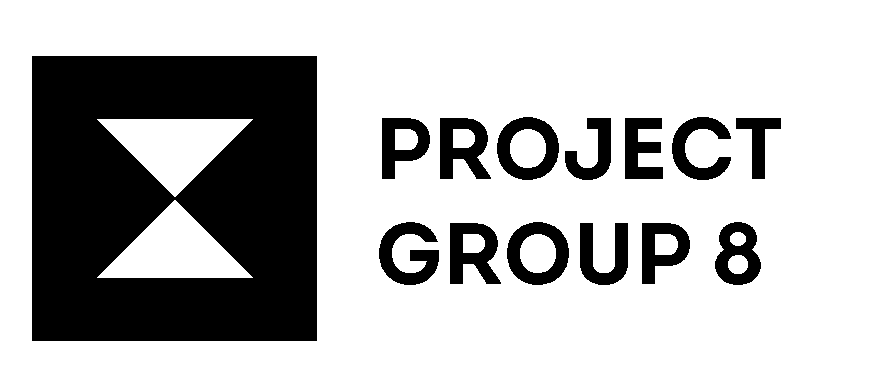Bus stop "Drama Theatre"
Vologda, 2014, Project Group 8
At the year 2014 the city of Vologda faced a public transport crisis. The inconsistency of passenger carriers led to frequent schedule disruptions. Moreover, quite many of the old bus stop pavilions were demolished as a result of changes in legislation, and at that time there was even no shelter for citizens to suffer from the rain while waiting for the bus to come. One of these sites was a bus stop in the city center named after the Drama Theatre - the largest theatre in Vologda situated just nearby. Not only the theatre, but a large university campus, administrative block and the central square are situated close to the site, so quite many people always gather there at once.
The whole block was built up in Soviet Union modernism style with the theatre as the most remarkable building. Also the site features included very little space for a new bus stop pavilion which was meant to be rebuilt there one day.
There was no unified design code for bus stops in the city, none of them was designed especially for Vologda, and installations of new ones often caused series of problems such as vandalism. All these factors were the reason to act quickly as a series of pavilions was demolished, and the ongoing research on bus stops by Project Group 8 resulted in the project of a new bus stop development.
The whole block was built up in Soviet Union modernism style with the theatre as the most remarkable building. Also the site features included very little space for a new bus stop pavilion which was meant to be rebuilt there one day.
There was no unified design code for bus stops in the city, none of them was designed especially for Vologda, and installations of new ones often caused series of problems such as vandalism. All these factors were the reason to act quickly as a series of pavilions was demolished, and the ongoing research on bus stops by Project Group 8 resulted in the project of a new bus stop development.









The true aim of the project was not just to build a bus stop pavilion or to create an appropriate design for the site, but it was to show that people can actually affect the process of city development and that they actually have the voice in a joint decision-making process. Project Group 8 acted not only as architects but as social activists taking the initiative and working voluntarily.
From the very beginning the work started with forming a project team. On series of consistent participatory sessions, design games and open workshops with public transport users, passenger carriers, local experts, city managers and opinion leaders as well as neighborhood and active citizens were engaged in a joint process of discussion and decision-making. The whole process was open with a possibility for everyone to participate in. It lasted for several months until the final design was approved and the actual pavilion was installed.
Not only series of special occasions and online activity was organized. Also on the site itself the future bus stop was discussed with regular citizens in several weeks-lasting series of interviews and opinion polls. While conducting this research a prototype with temporary seats was made which was meant to be moved, so that people could also express their needs by action. The large-scale research included a study of the existing bus stops as well.
All the research conducted resulted in charting of a socially functional model. The main requests were as follows: a large non-transparent awning, many seats of various height, minimization of transparent and fragile surfaces. The new bus stop also needed to be safe, vandal-proof and well-protecting against rain, wind and sun. Wood was used as a basic material which was also suggested by citizens as a reminding of old wooden bus stops. The use of wood was an experiment as it's still not commonly used in Russia and in Vologda particularly even though it was a traditional material earlier.
The bus stop has quite unusual form due to the aspiration to save and organize the original pedestrian paths on a very little area while trying to enlarge the pavilion to fit the necessary number of people.
Having an extremely limited budget the decision was to cease the costs to the minimum while fulfilling all of the basic criteria, and the ways people using the object are exactly the ones programmed. As a bonus the navigation was taken into account and also lighting and a mirror ceiling was added, which became a real fun while waiting a bus to come, especially for children.
From the very beginning the work started with forming a project team. On series of consistent participatory sessions, design games and open workshops with public transport users, passenger carriers, local experts, city managers and opinion leaders as well as neighborhood and active citizens were engaged in a joint process of discussion and decision-making. The whole process was open with a possibility for everyone to participate in. It lasted for several months until the final design was approved and the actual pavilion was installed.
Not only series of special occasions and online activity was organized. Also on the site itself the future bus stop was discussed with regular citizens in several weeks-lasting series of interviews and opinion polls. While conducting this research a prototype with temporary seats was made which was meant to be moved, so that people could also express their needs by action. The large-scale research included a study of the existing bus stops as well.
All the research conducted resulted in charting of a socially functional model. The main requests were as follows: a large non-transparent awning, many seats of various height, minimization of transparent and fragile surfaces. The new bus stop also needed to be safe, vandal-proof and well-protecting against rain, wind and sun. Wood was used as a basic material which was also suggested by citizens as a reminding of old wooden bus stops. The use of wood was an experiment as it's still not commonly used in Russia and in Vologda particularly even though it was a traditional material earlier.
The bus stop has quite unusual form due to the aspiration to save and organize the original pedestrian paths on a very little area while trying to enlarge the pavilion to fit the necessary number of people.
Having an extremely limited budget the decision was to cease the costs to the minimum while fulfilling all of the basic criteria, and the ways people using the object are exactly the ones programmed. As a bonus the navigation was taken into account and also lighting and a mirror ceiling was added, which became a real fun while waiting a bus to come, especially for children.






The most outstanding thing wasn't only that the bus stop was built, even though this was a great achievement already by itself. The greatest success was to manage to work with all the stakeholders and to really change the citizens' attitude towards more active and sensible life in Vologda. There was a first precedent of true participation and design in public interest in the city. Started as a winner of local youth forum "Your City", the project was presented at the International Research and Practice Forum "Social Innovation Studies" held by Vologda City Administration.
Post-occupancy evaluation, people interviews and observations show that the decisions made were correct so the goal to design an appropriate bus stop for the particular site was achieved. However, the standard model for city transport stop pavilions on the basis of data obtained was not implemented, but still all the demolished bus stops were rebuilt that year as the theme was sharp and widely discussed. Also what really shows the people's attitude towards the work is the fact it's the only bus stop which doesn't struggle from vandalism at all.
The "Drama Theatre" bus stop became a symbol of new wooden architecture in Vologda and also a true symbol of participation in the development of which local residents were involved on a par with the municipal authorities and local businessmen.
Post-occupancy evaluation, people interviews and observations show that the decisions made were correct so the goal to design an appropriate bus stop for the particular site was achieved. However, the standard model for city transport stop pavilions on the basis of data obtained was not implemented, but still all the demolished bus stops were rebuilt that year as the theme was sharp and widely discussed. Also what really shows the people's attitude towards the work is the fact it's the only bus stop which doesn't struggle from vandalism at all.
The "Drama Theatre" bus stop became a symbol of new wooden architecture in Vologda and also a true symbol of participation in the development of which local residents were involved on a par with the municipal authorities and local businessmen.

❤
